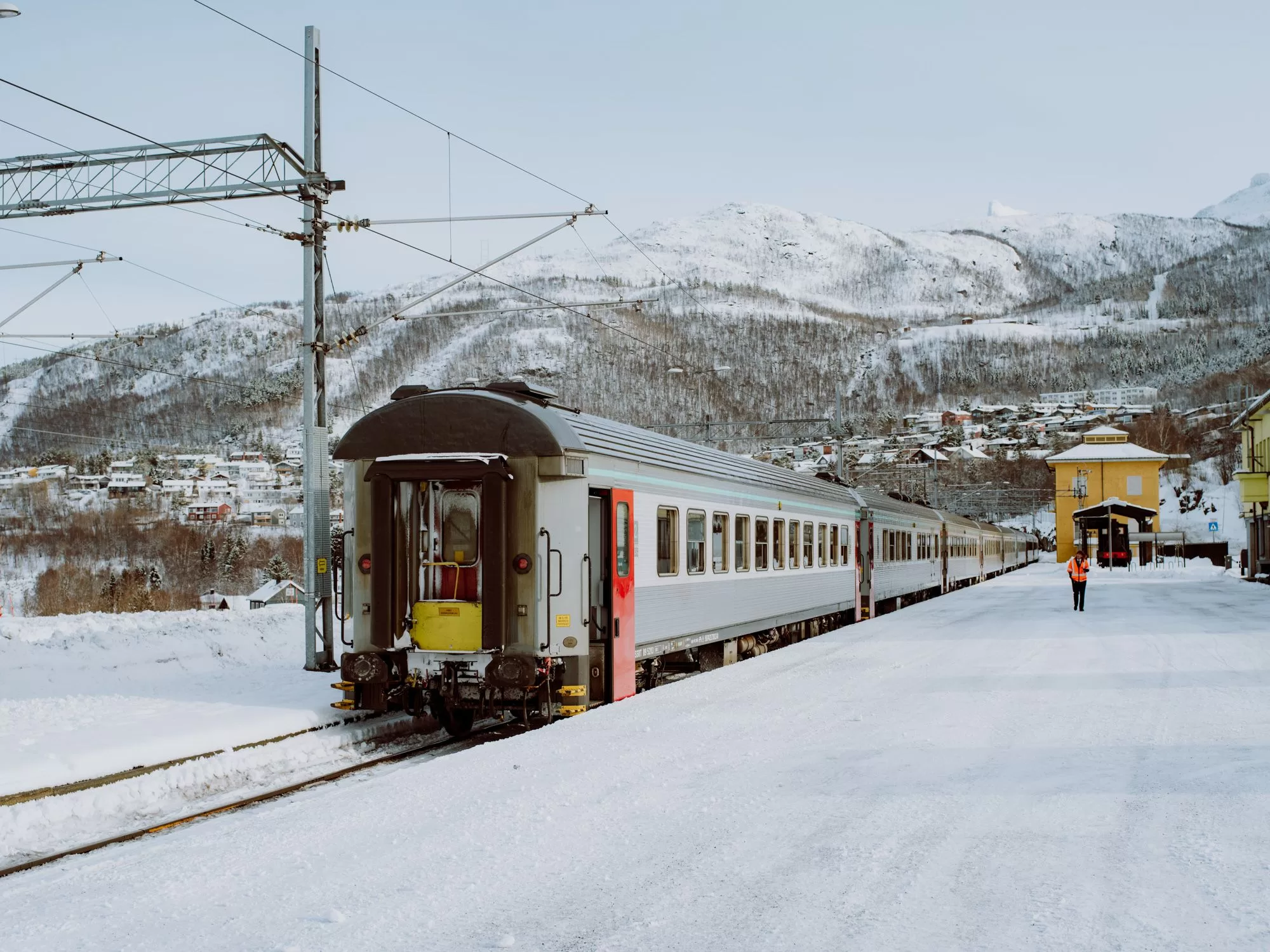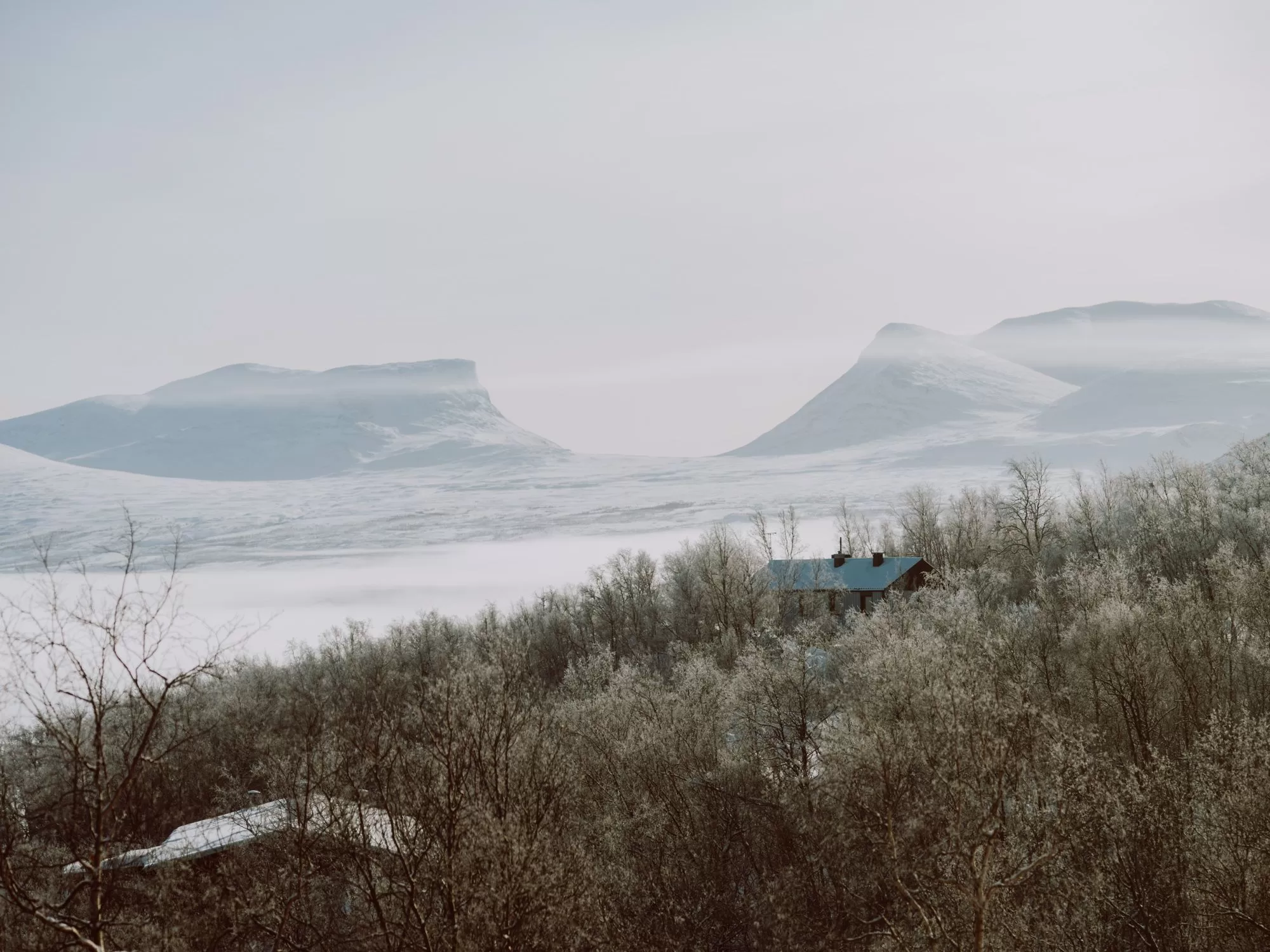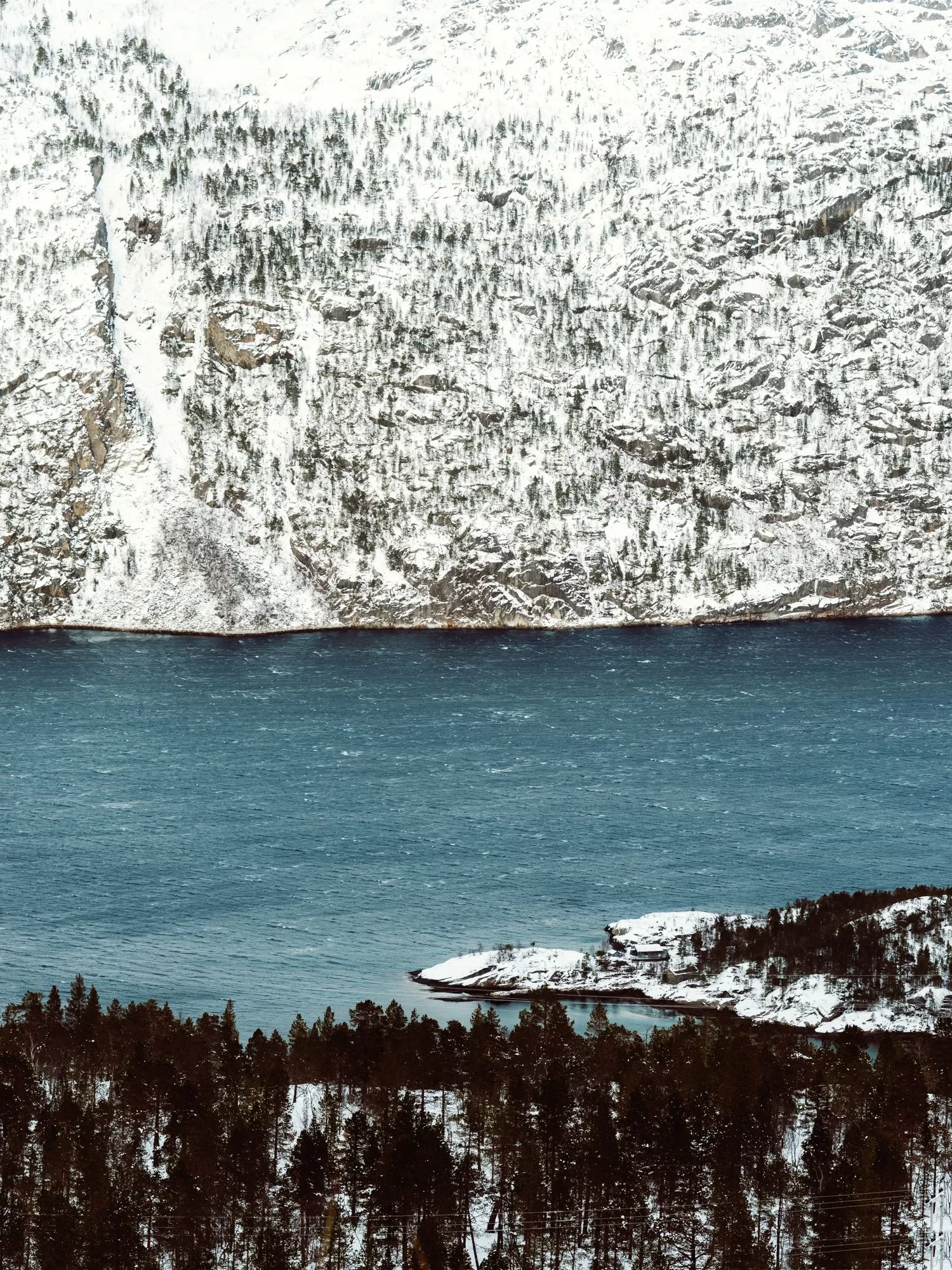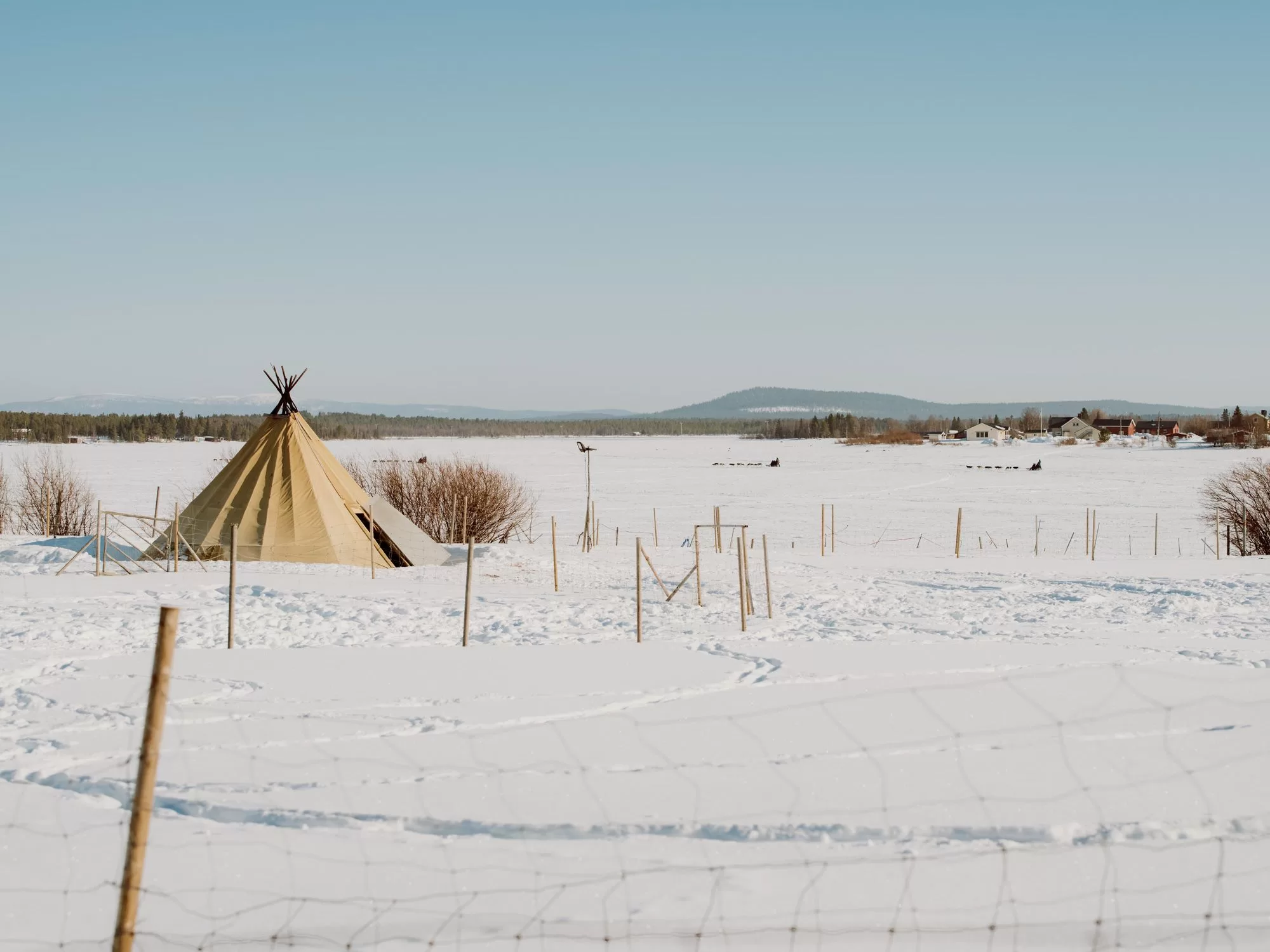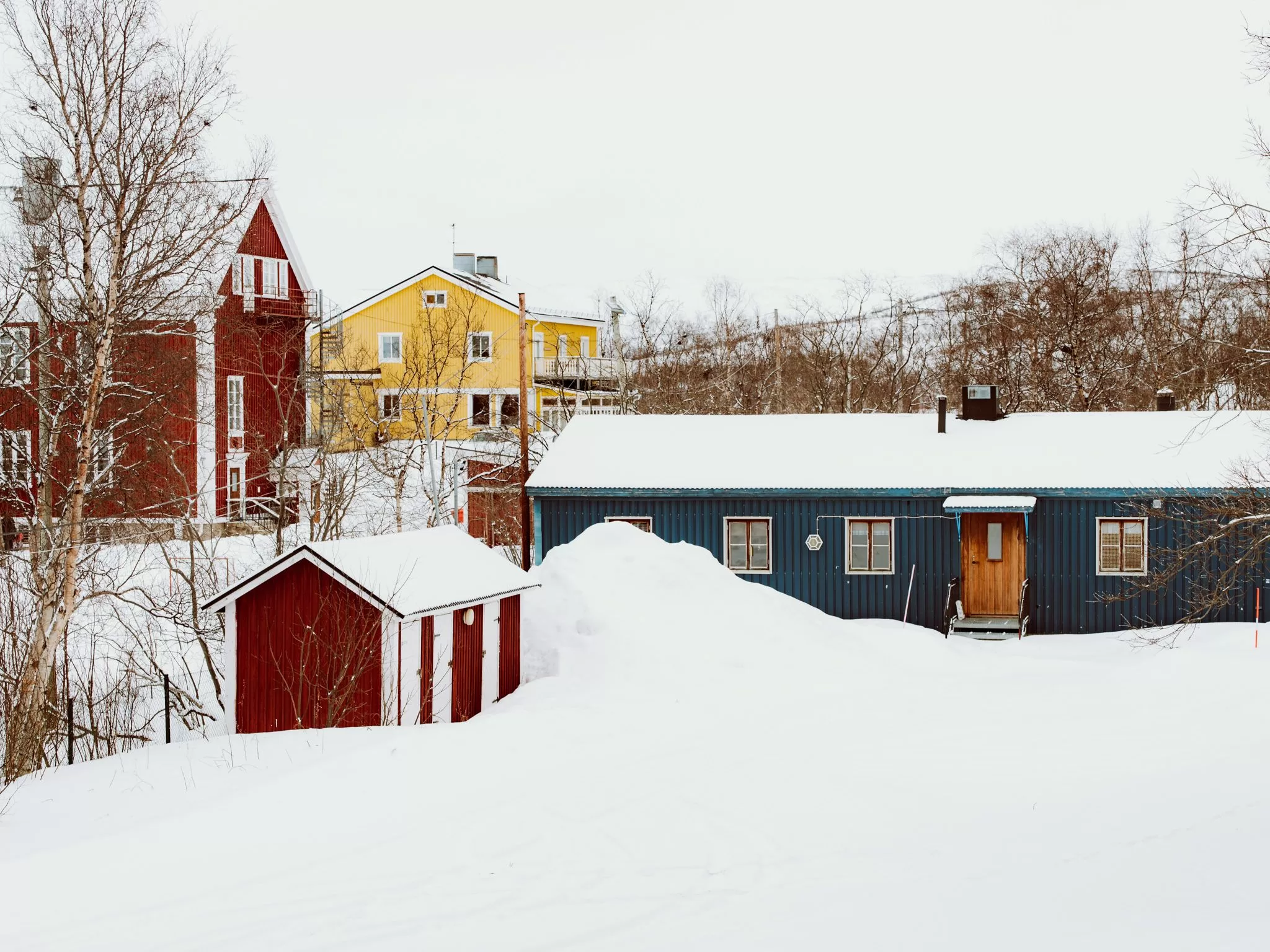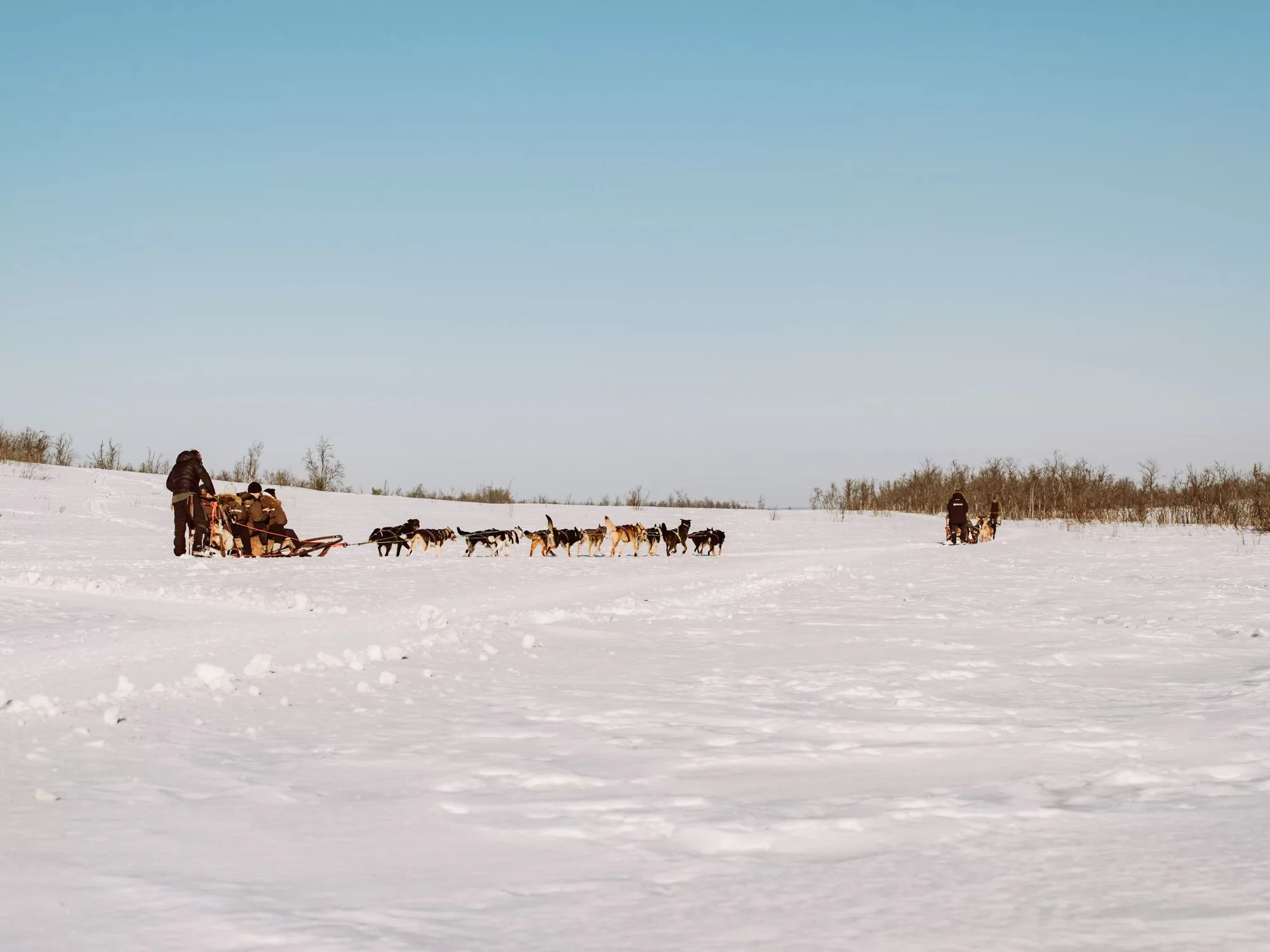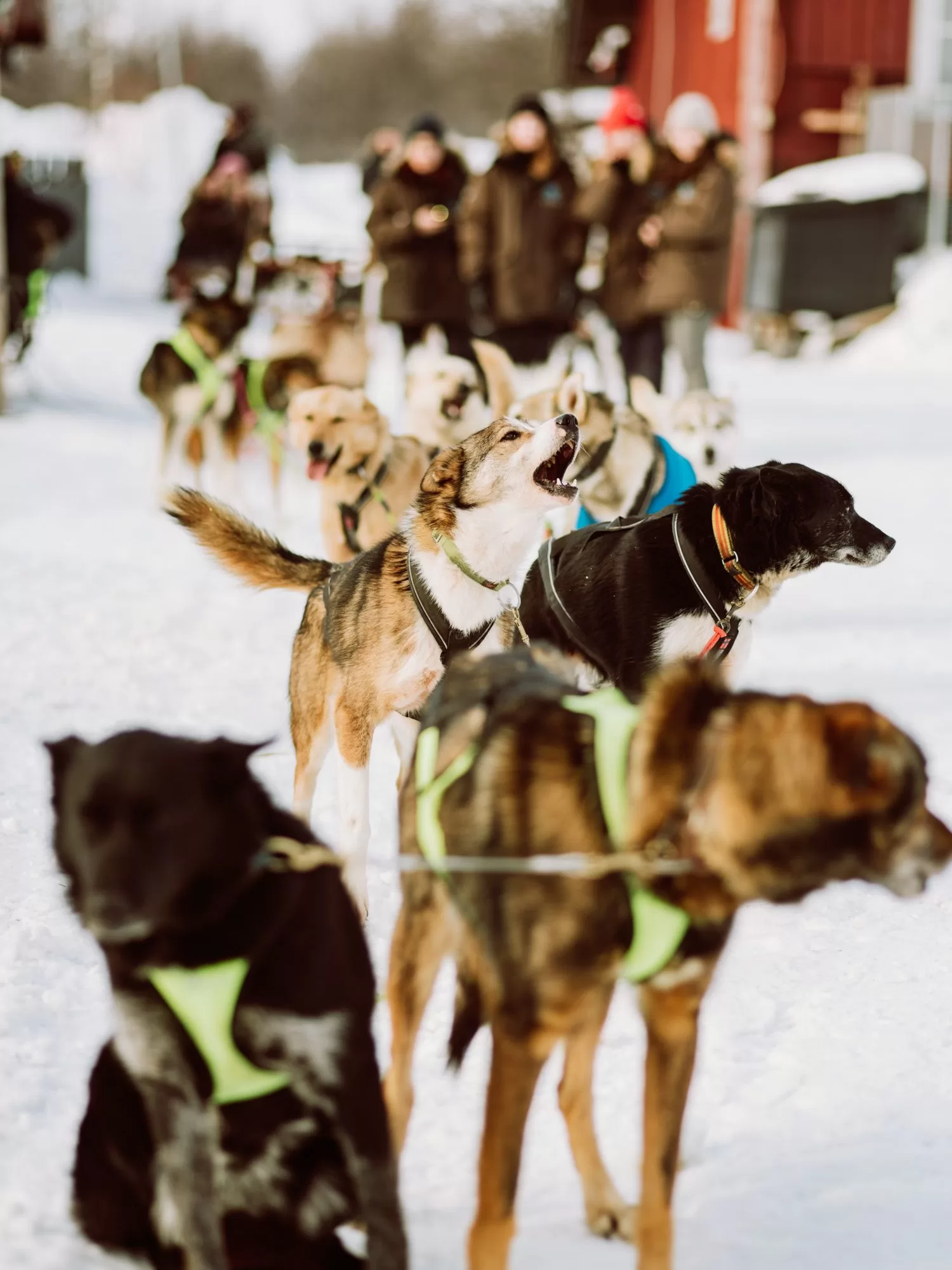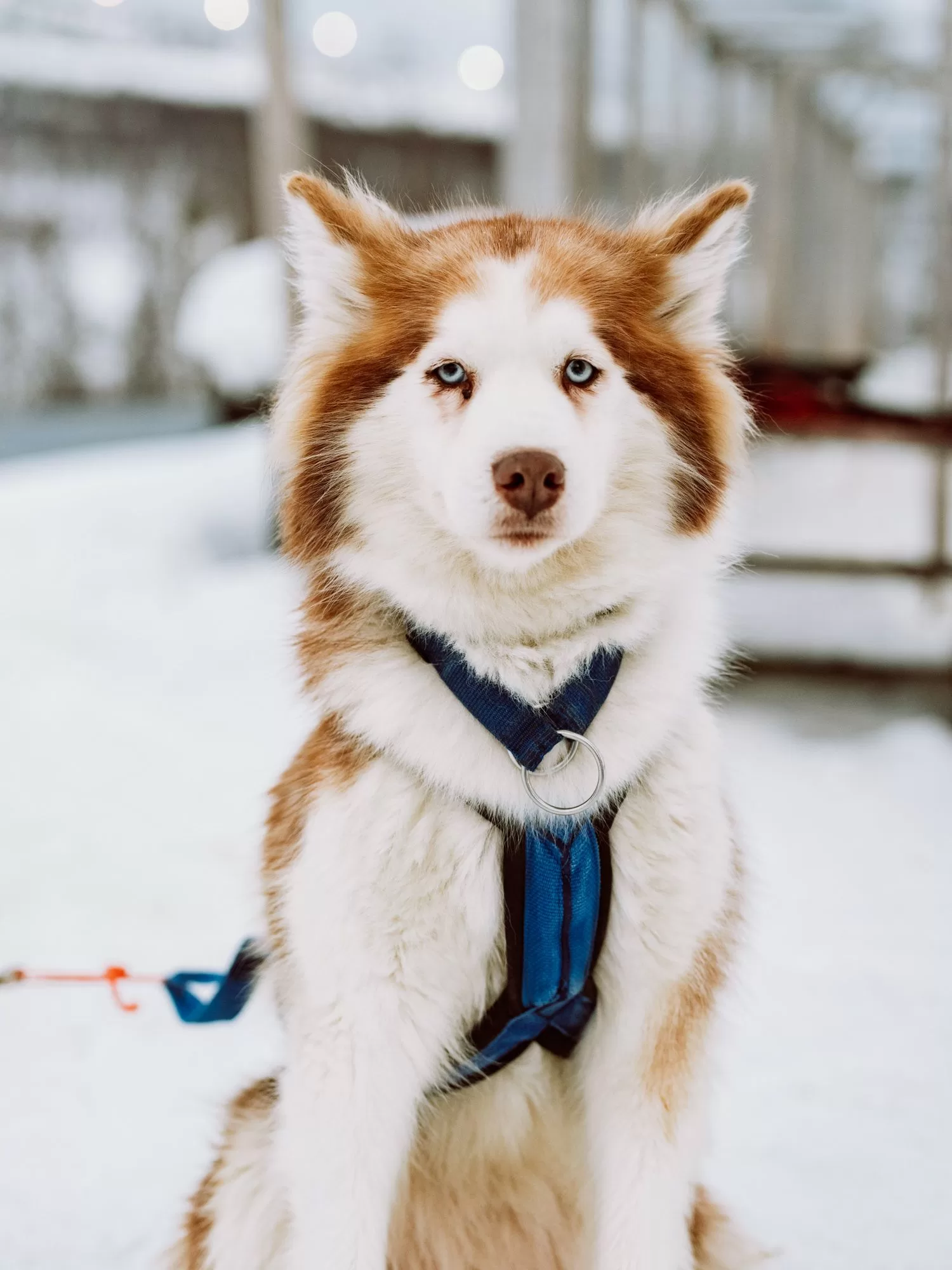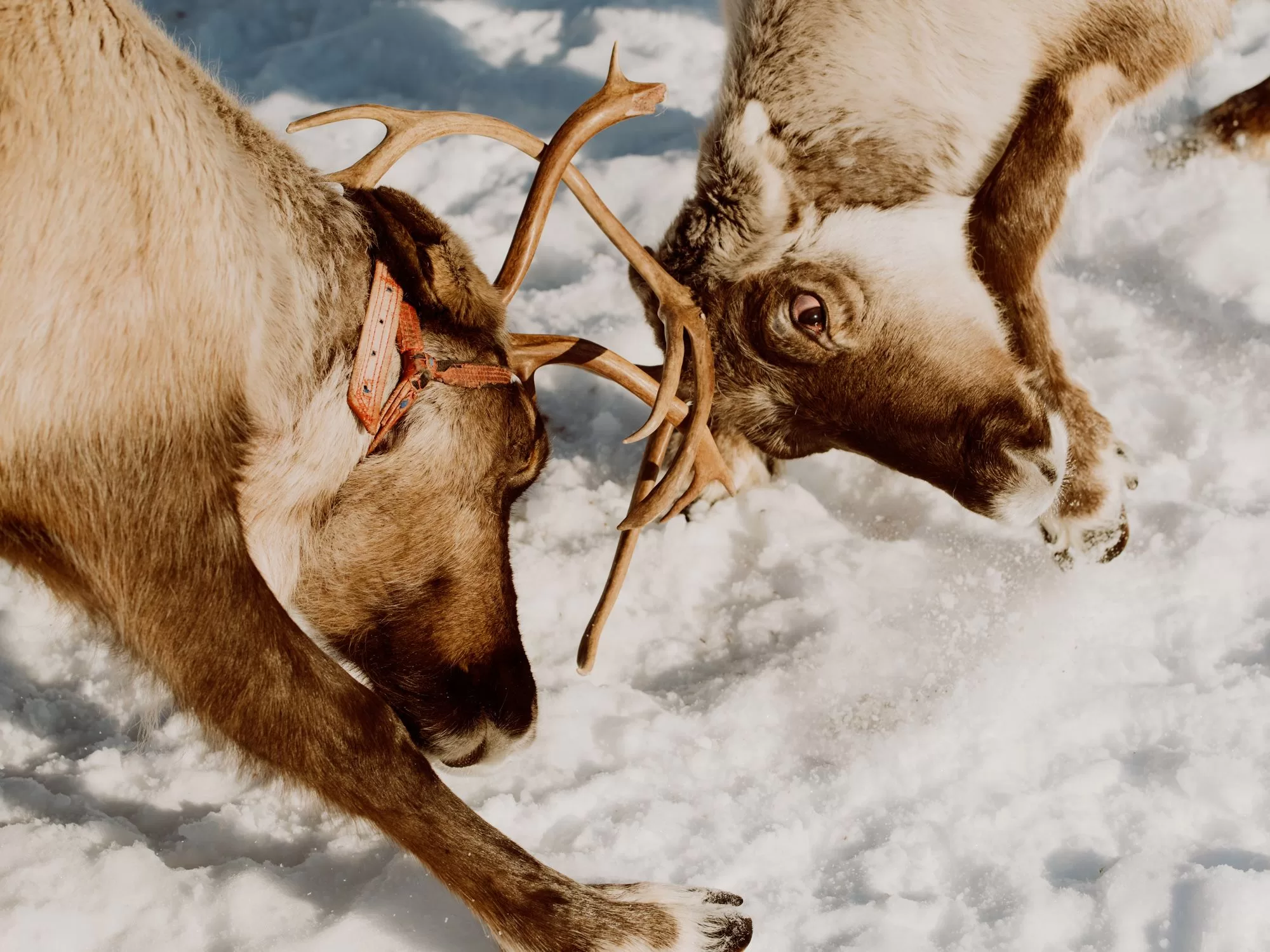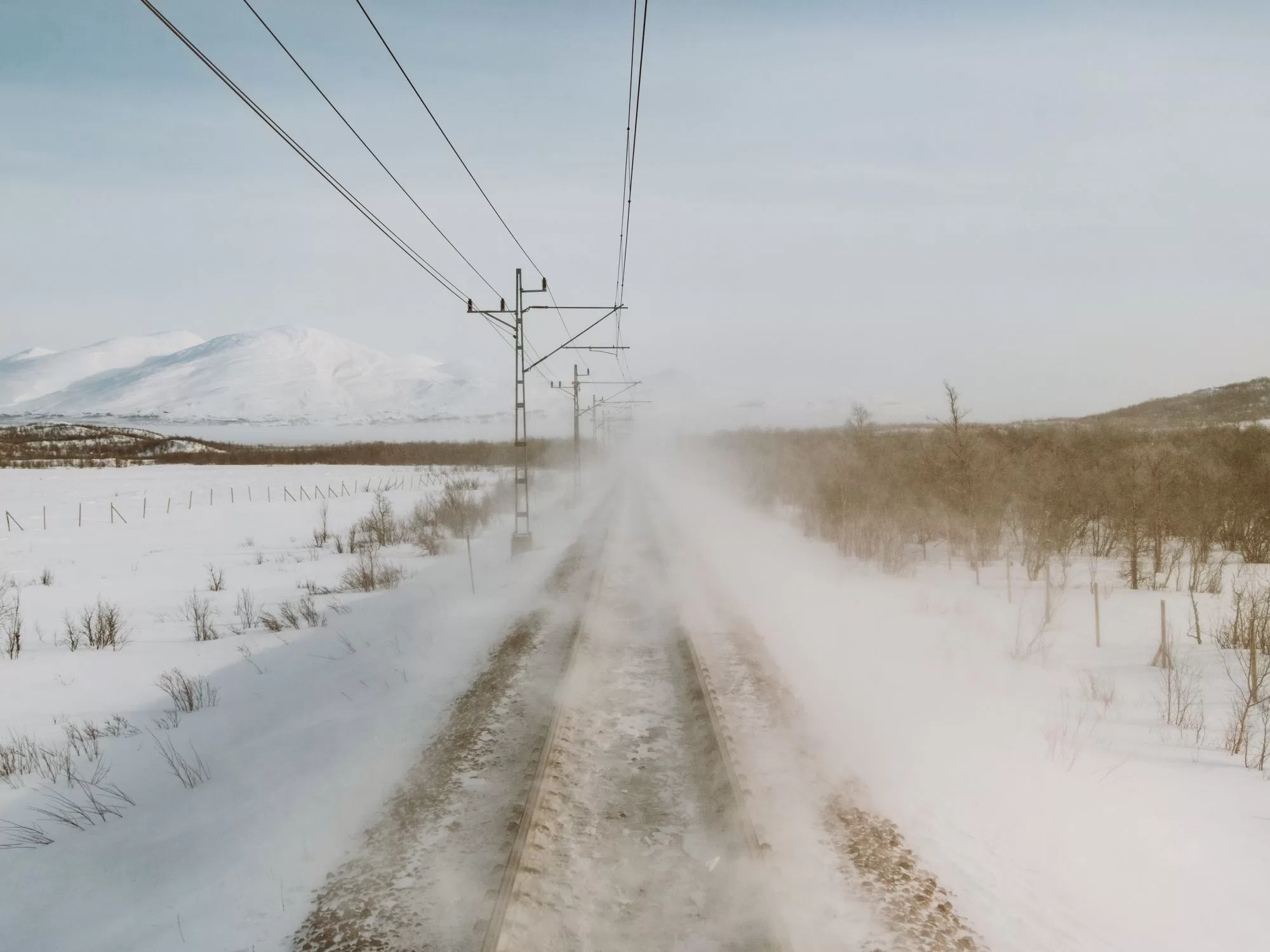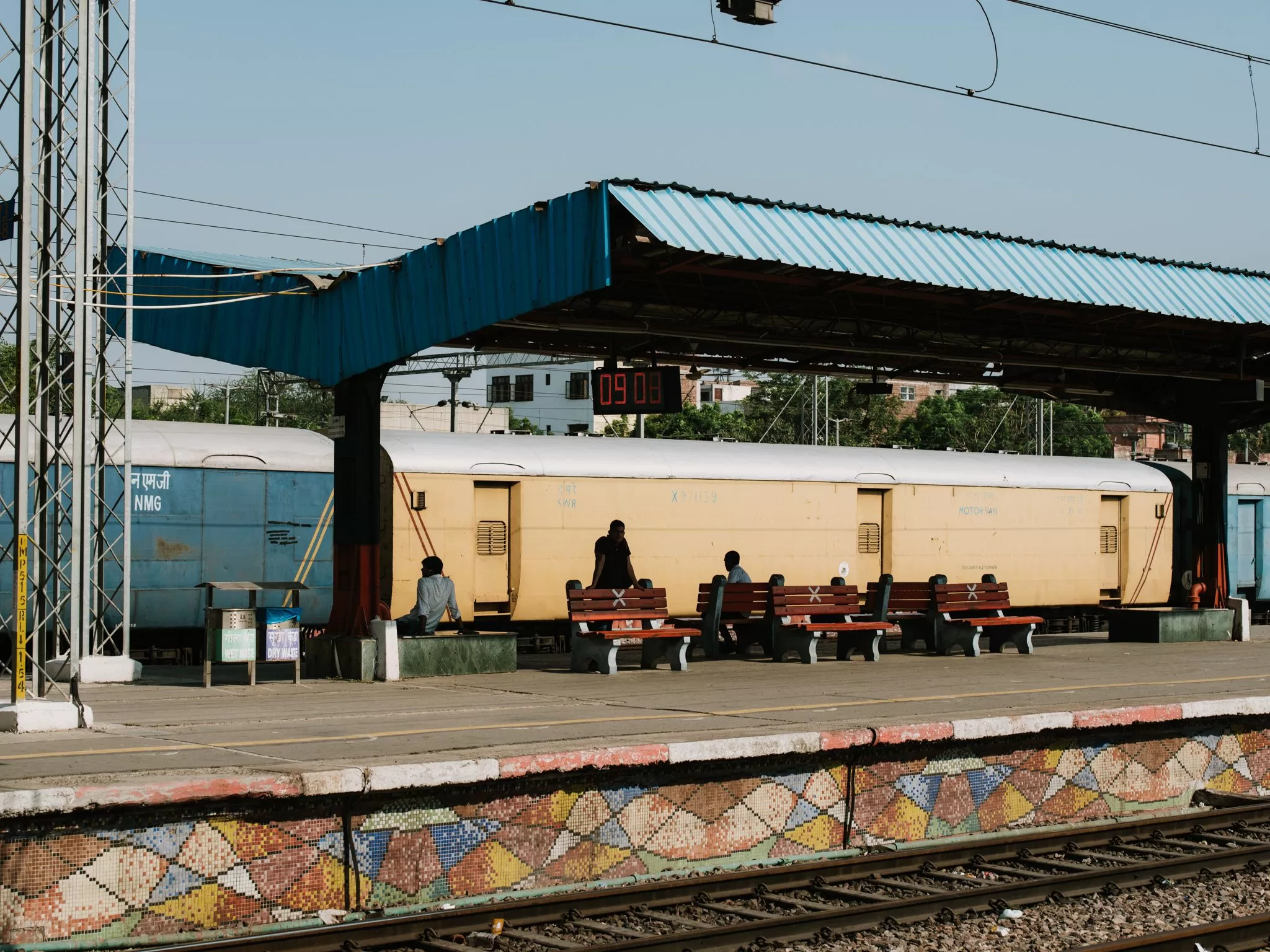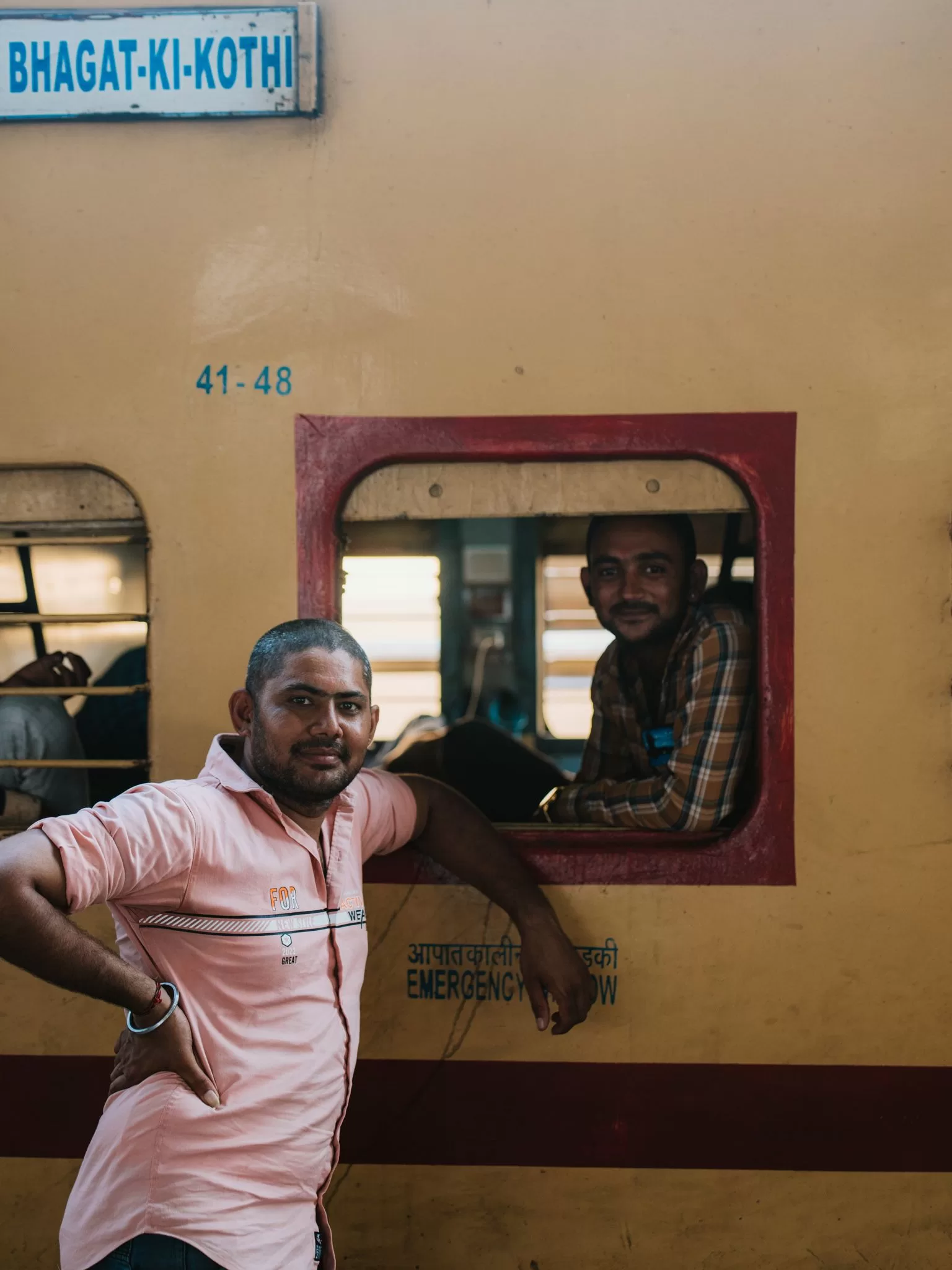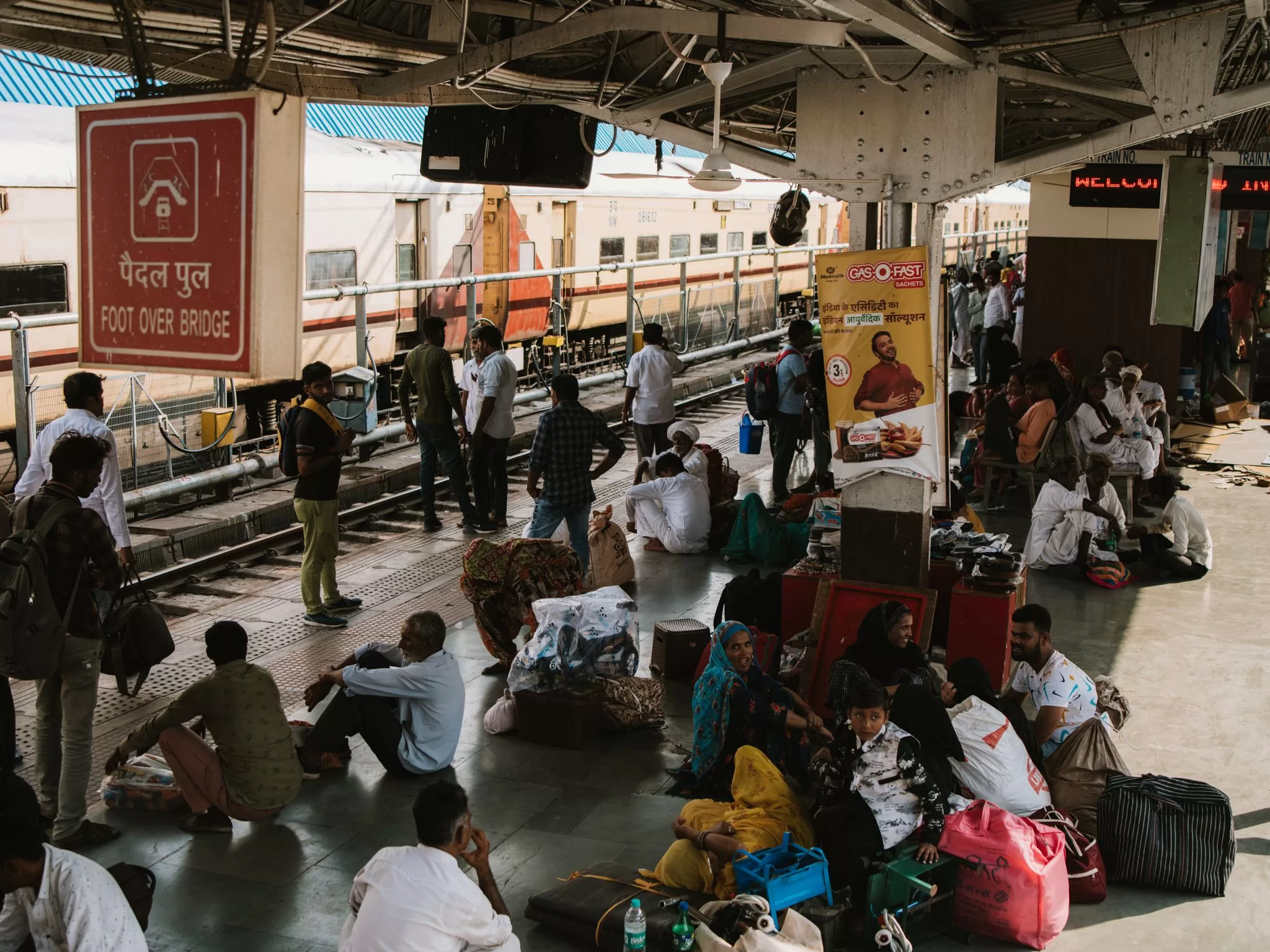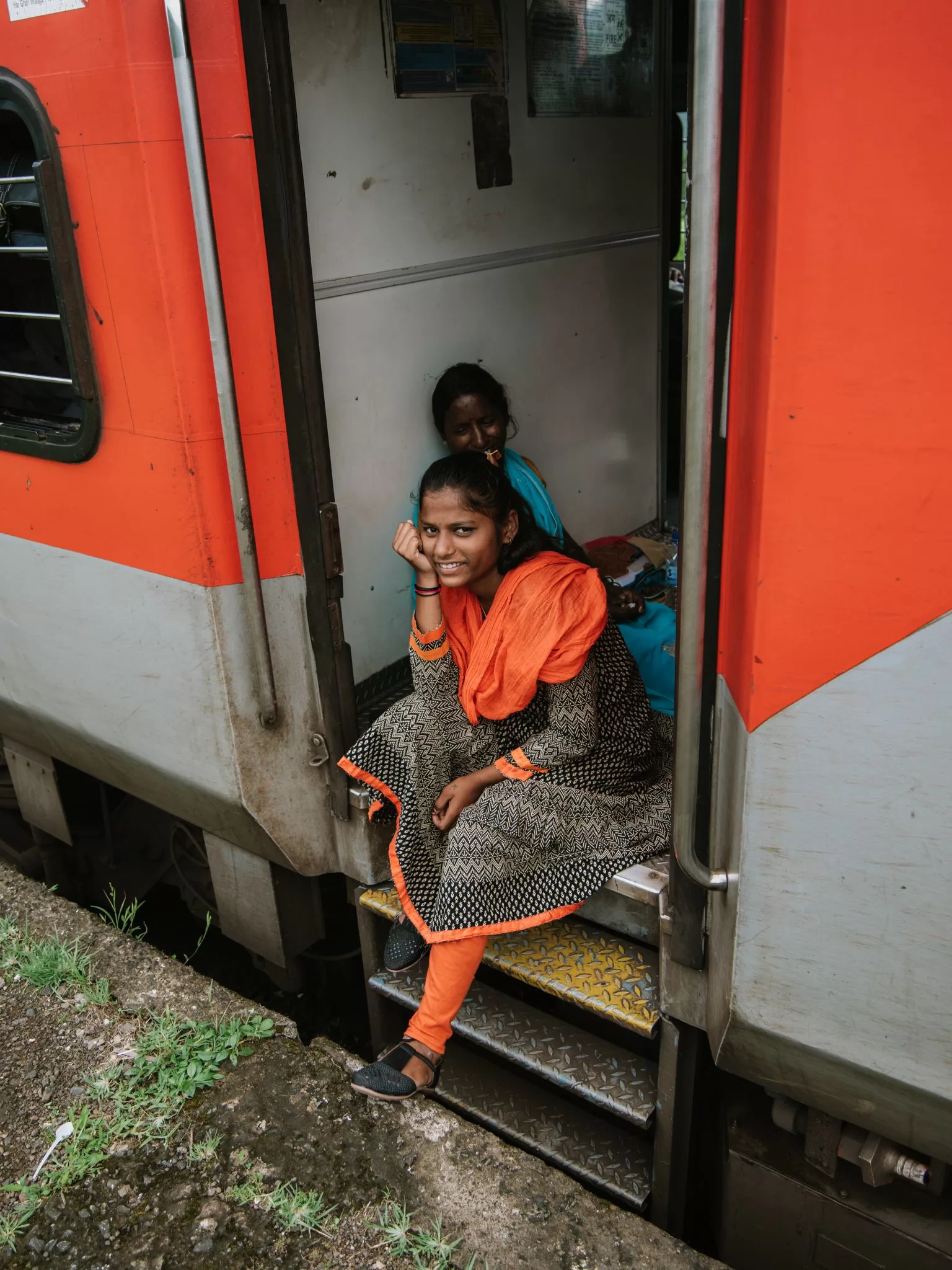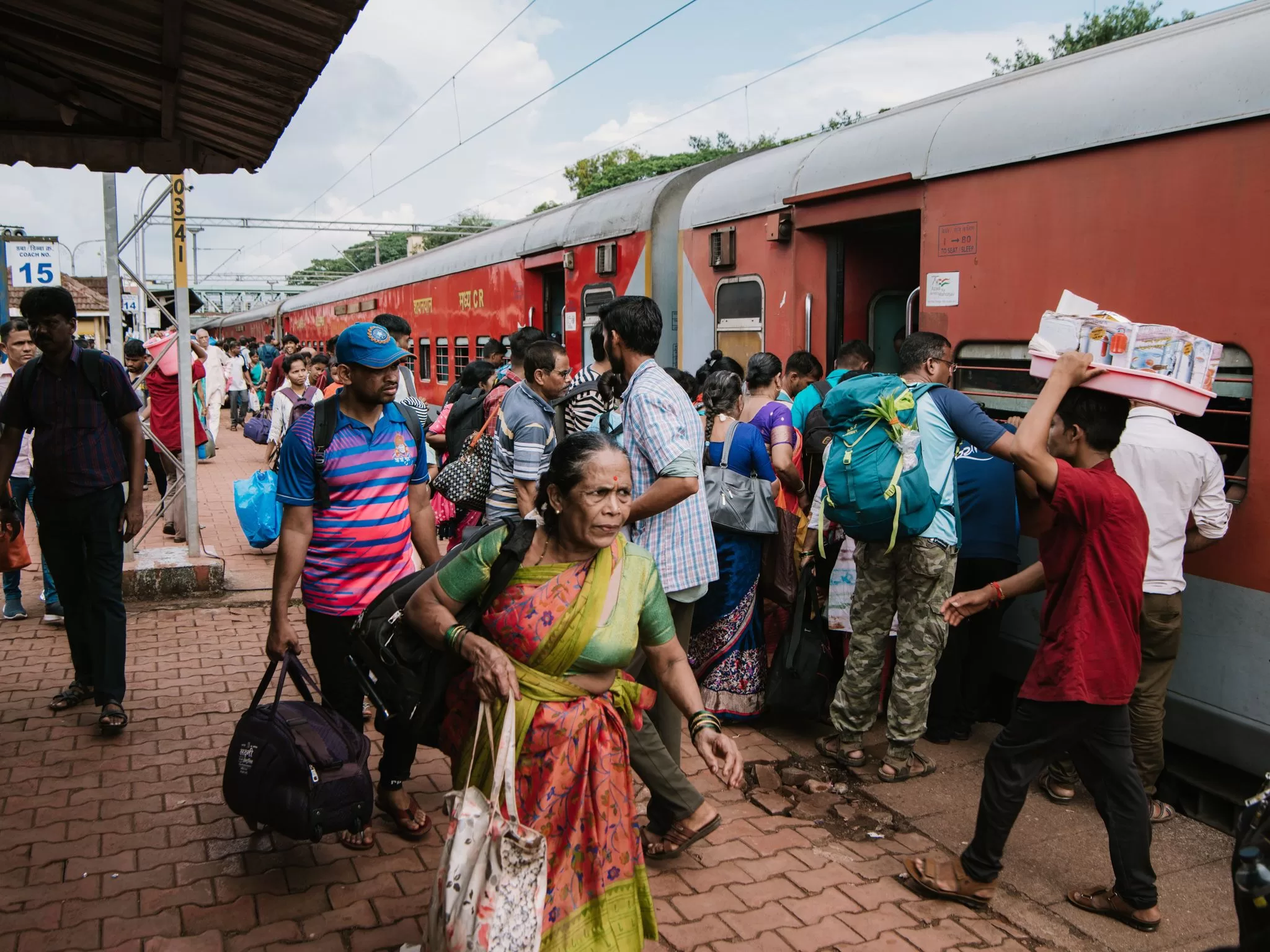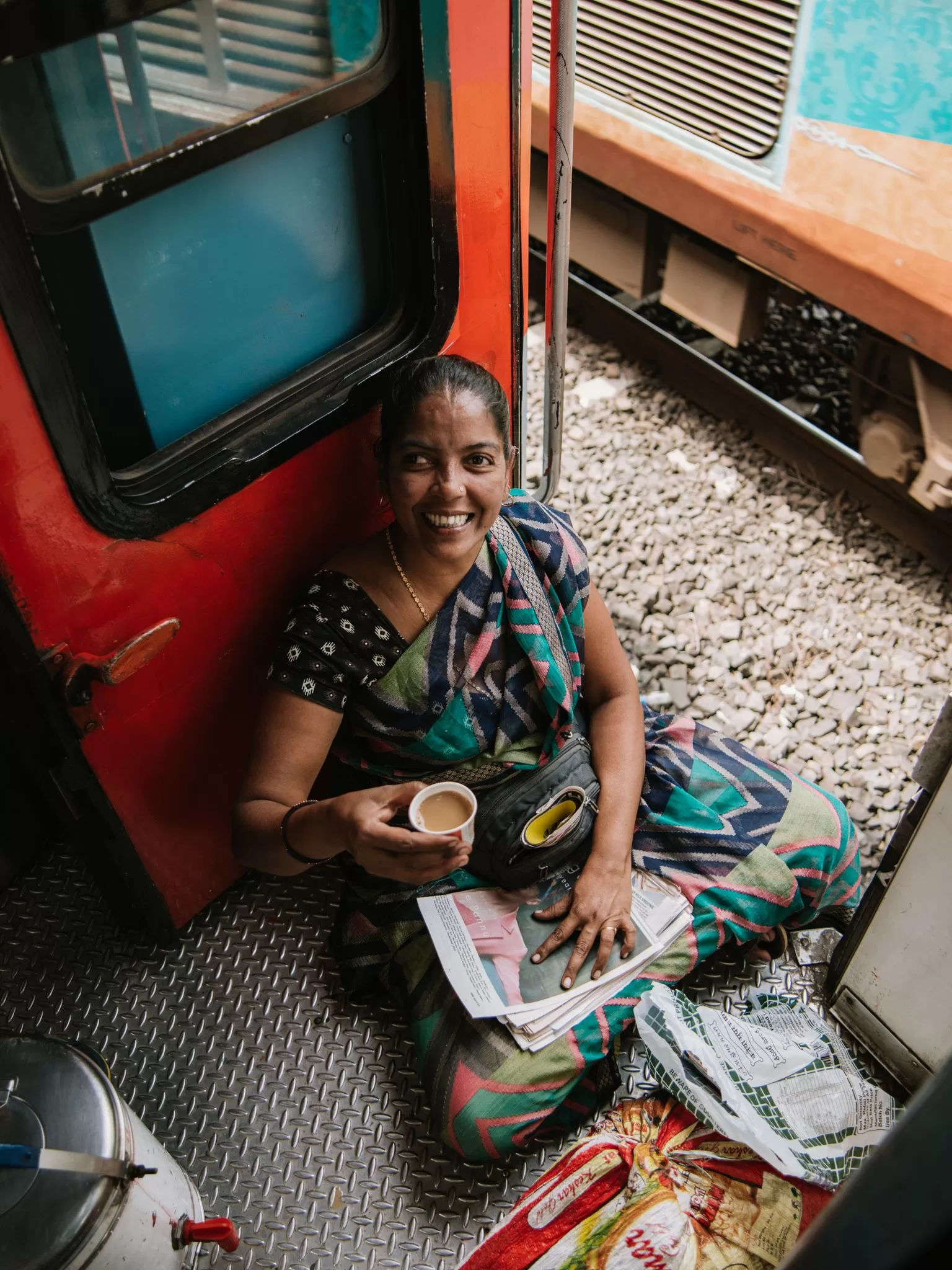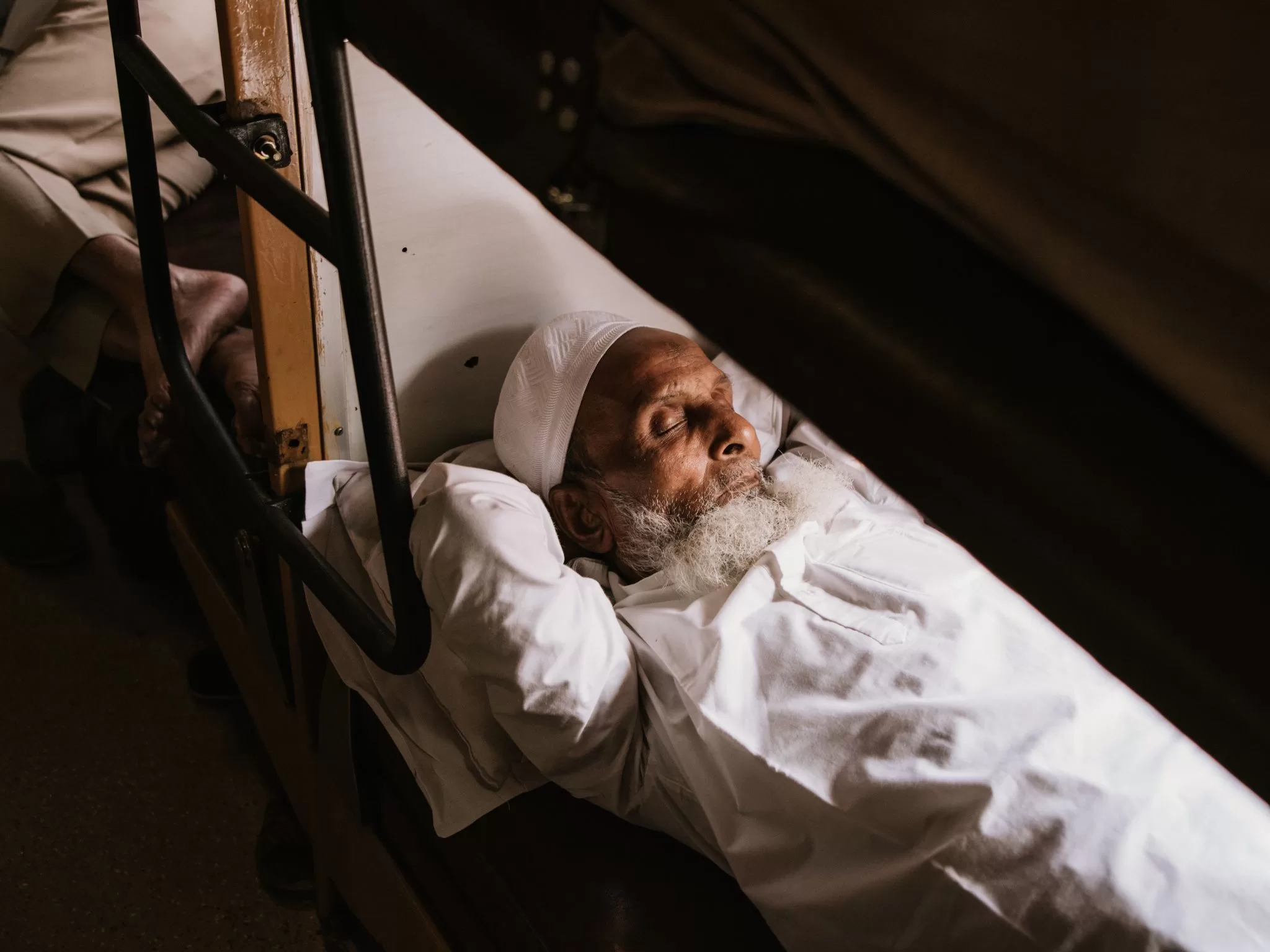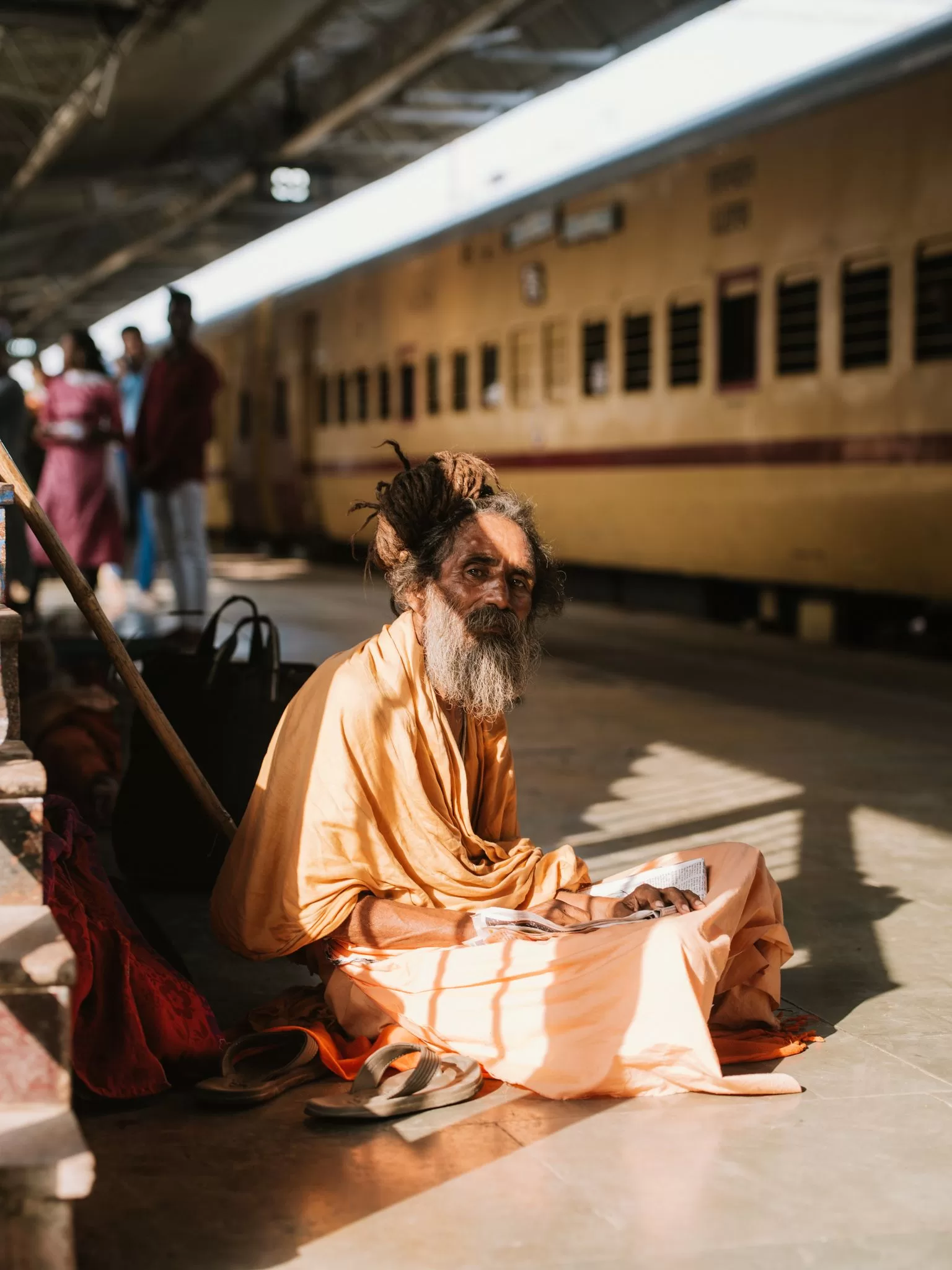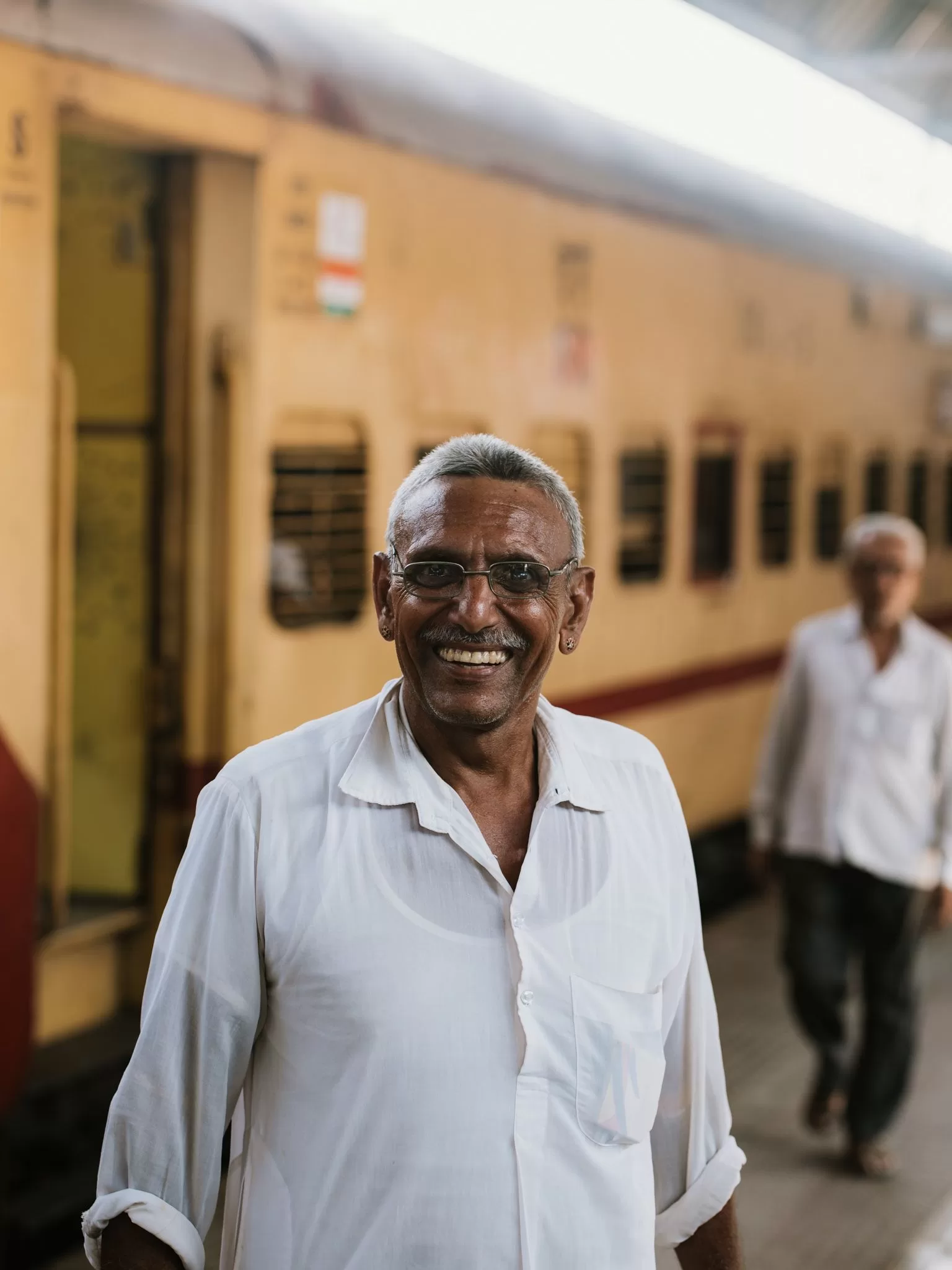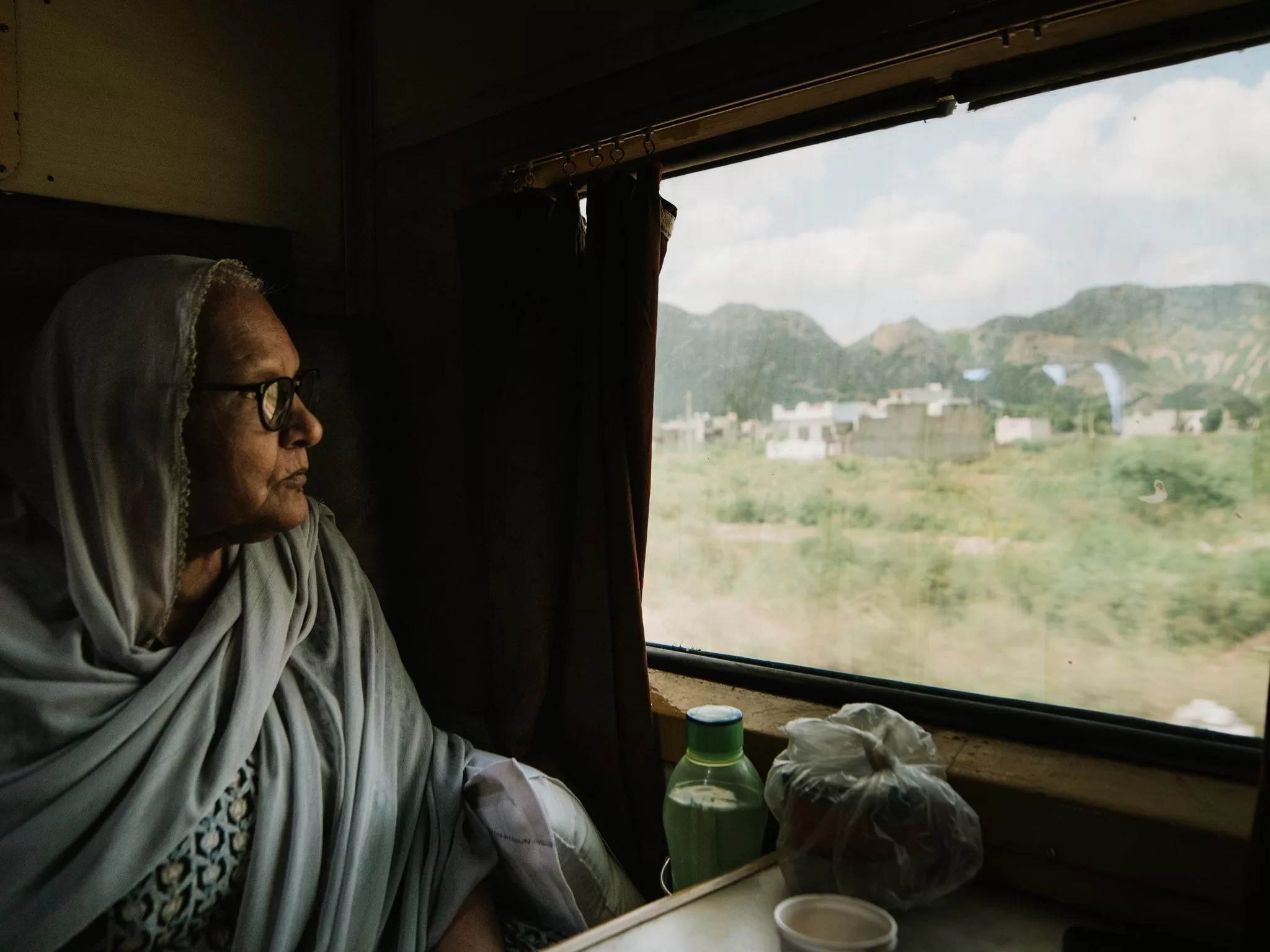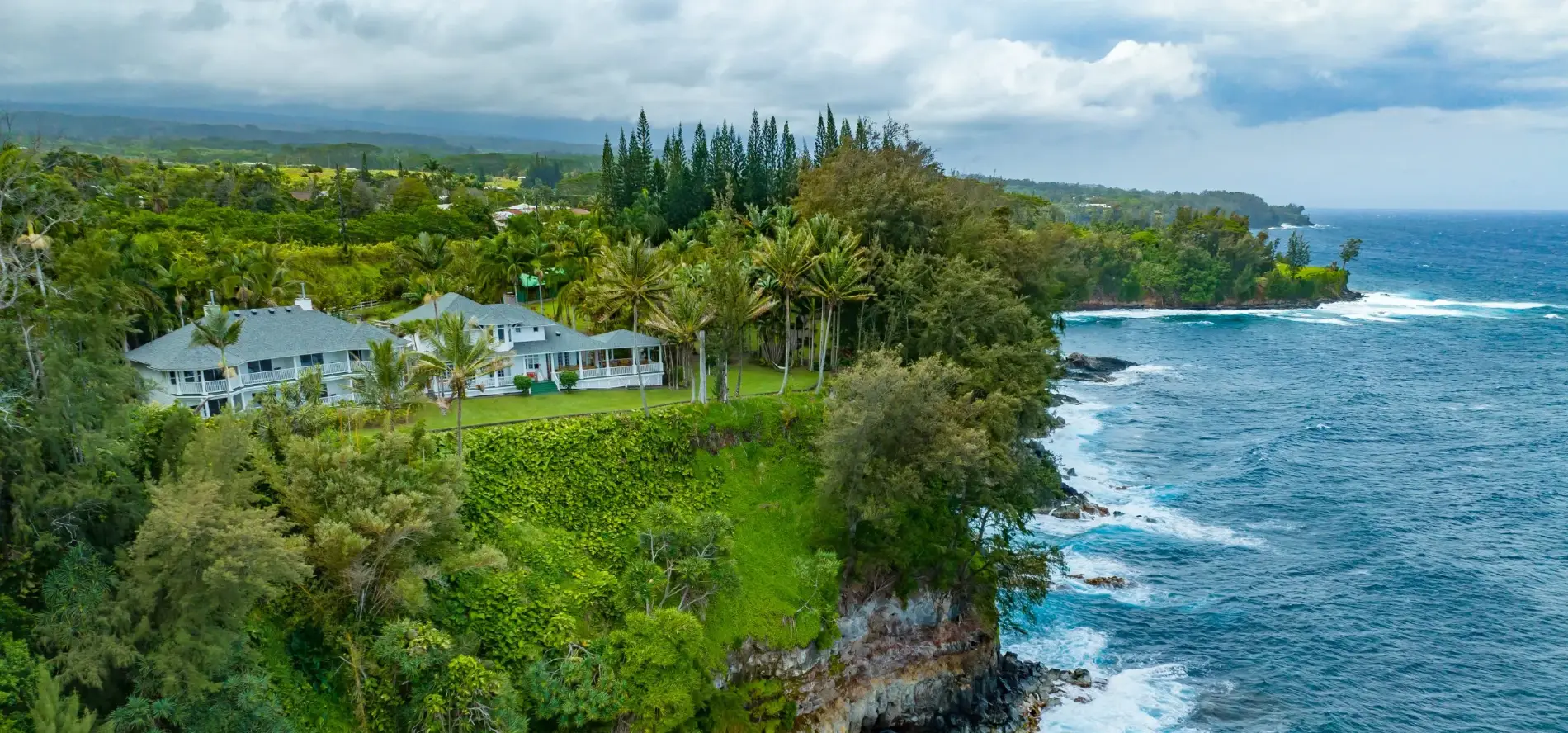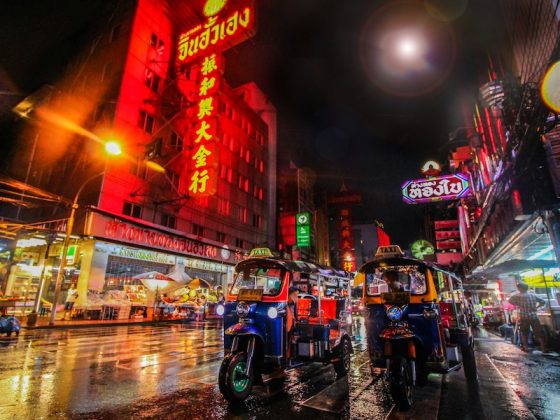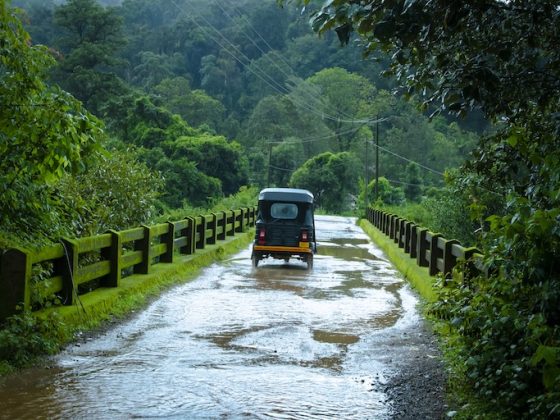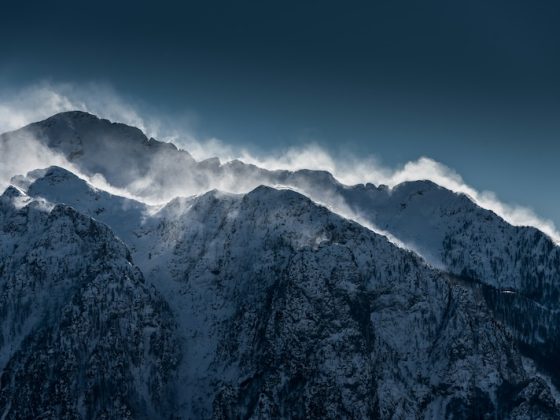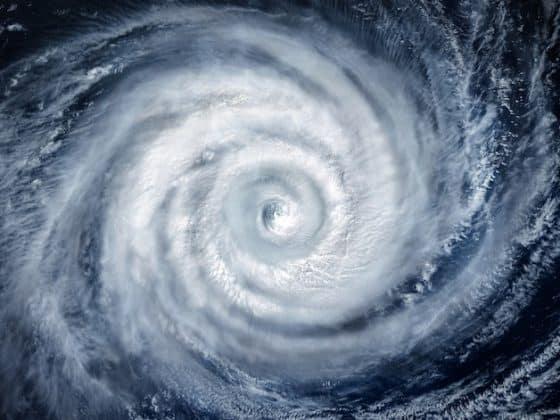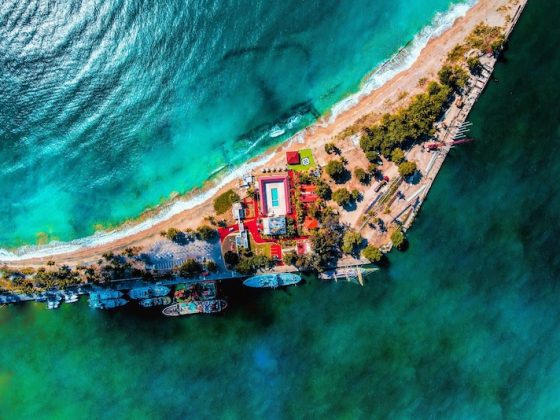Seventeen hours into my journey from Stockholm, I shuffled up to the window as the sun began to burn through the clouds. Skeletal and buried to the waist in drifts, the trees were now white and laced together, branches touching, like a child’s paper chain.
The train crept along the forest’s edge, revealing delicate loops where birds had hopped around the snow, which was crisp, hard and sparkling like shattered glass. White peaks rose in the distance, wrapped in shawls of cloud. Looking down, I took a sharp breath at the sight of the fjords emerging.
Like black silk ribbons they wound around the base of cliffs, a terrifying majesty in their glacial movement. Peach-gold sunbeams fell upon the scene, softening everything in sight, just a handful of passengers privy to this glorious finale as the train drew into its destination, the old Norwegian port of Narvik.
It was early March, my first time visiting Scandinavia. For years I had longed to go in search of the Northern Lights and had learned that they were best viewed towards the end of winter when clouds no longer obscured the sky. Narvik is said to be ideal for midnight hikes and snow-shoe treks, and a gateway to the Lofoten Islands, from where the lights are visible two-thirds of the year. The mere idea of finally witnessing the balletic aurora borealis was almost too much to bear, my excitement building up on the train.
It would have been perfectly possible to take a 90-minute flight from the Swedish capital to the nearby city of Kiruna, followed by a two-hour train up to Narvik. But I eschewed the soulless flight for a slow railway ride up the backbone of the country and over the border.
Departing at 6pm, the aroma of reindeer stew in the air, I had tucked into a bowl in the dining car, sharing strips of sticky gravlax with jovial teachers on a ski break, who shared with me some tips for spotting the Northern Lights.
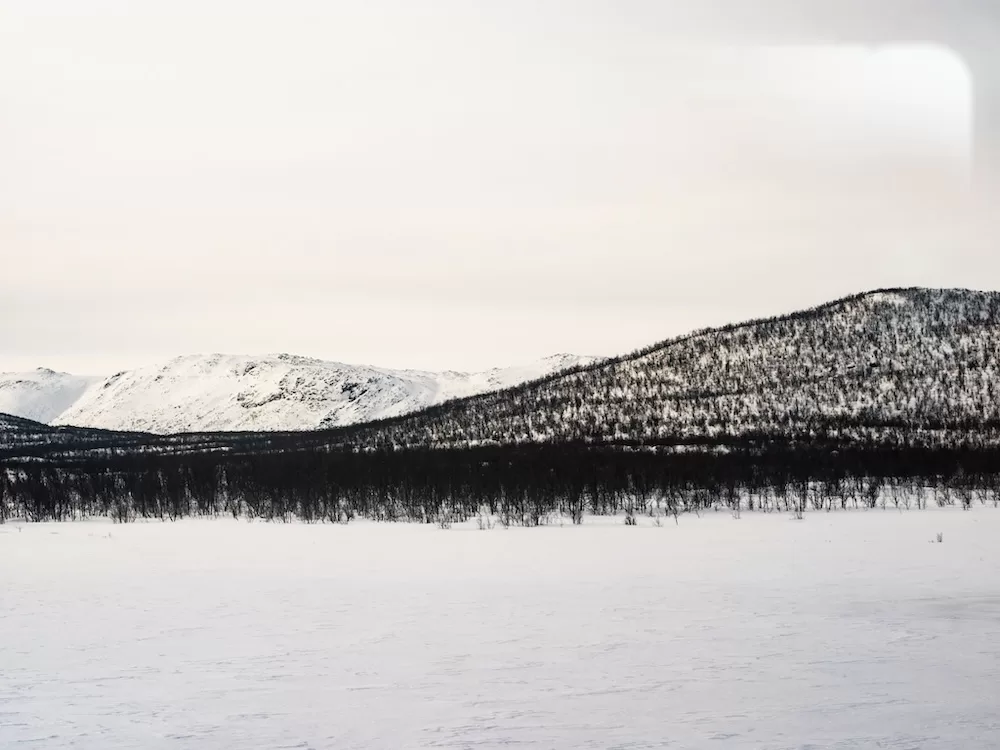
From the coziness of a six-person couchette, I held back the curtain, peeking into people’s kitchens as they washed dishes, the blue glow of TVs lighting up their living rooms. Toys lined children’s window sills. Stars hung from wooden porches and icicles dripped like daggers.
Surrounded by the warmth of new company, the tinkle of drunken laughter and a shared sense of adventure, I drifted off, waking as the train climbed into the Arctic Circle, giving me an understanding of distance, time and place I’d otherwise not have found.
For fourteen years I’ve been addicted to seeing the world by train, skimming coastlines, curling around mountains and threading through the guts of towns and cities. The habit began in 2010 when I spent four months traveling the length and breadth of Indian Railways in an attempt to immerse myself in the bloodstream that keeps the country’s heart beating.
While the high-speed Shatabdi trains took me between megacities, it was the slowness of the steam trains, mail trains and long-distance express trains that allowed for idling alongside everyone from law students and CEOs to fruit sellers and laborers who divulged details of their daily routines, hopes for their children and their favored politicians.
Slowness granted the time to strike up friendships, play multiple games of rummy and note quirks and cultural nuance. As the trains snaked up and down the country, dialects changed over borders, hawkers brought variations of pakora, samosa and biryani and facial features sharpened and softened from one state into the next.
Often rolling at no more than a walking pace, the trains would pass through villages where no cars or buses could ever go, revealing the smell of frying onions, saris billowing on makeshift lines and residents showering under hosepipes looped over branches weighed down by blossom. As the train pulled into stations, I’d hear the slap of sandals as passengers leapt off before it stopped, a throng amassing around the carriage as hawkers waved newspaper cones of hot peanuts, families piled in and out and porters squatted to place boxes on their heads.
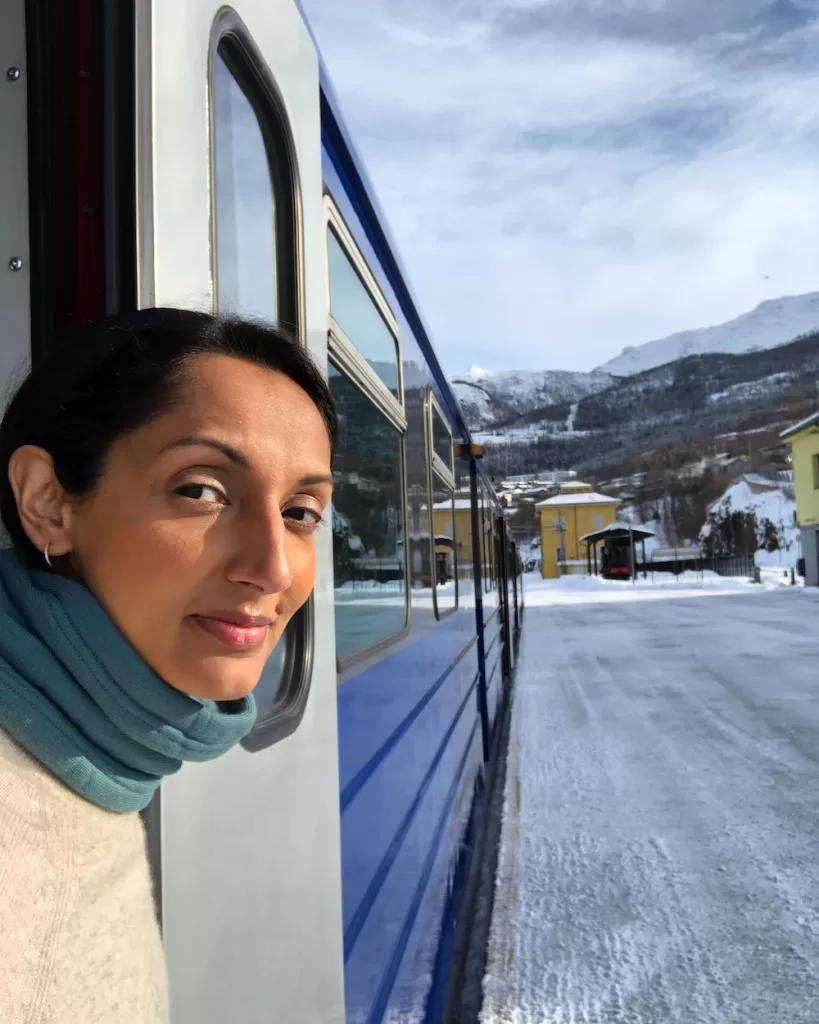
The pandemic forced us to rethink how we move through the world. Faced with the realities of climate change and the need to invest in our surroundings and the hosts who welcome us, many travelers have turned back to trains.
Across Europe, sleeper services have seen a revival owing to passengers looking to reduce their carbon footprints as they criss-cross the continent. There’s a simple appeal to falling asleep in one city and waking in another, refreshed and ready to face the day. In a world of hurried consumption, one in which we’re constantly scrolling, tapping and typing on the move, trains urge us to breathe, compel us towards calm and urge us to look out the window.
It’s from that train window that we bear witness to the world: how the landscape is fractured in Finland, held together by thousands of pockets of lakes; how the windswept slopes of the Peruvian Andes look smooth, as though dusted with cocoa; how Vietnam’s jungle grows around the carriage, banana leaves slapping against the sides.
During the day, the passenger is spoilt by the views of big blasts of ocean, sunlight sweeping across meadows, apartment blocks jutting out towards the tracks. The scenery offers itself up, doing all the work. But at night the passenger turns voyeur, scouring the shadows in the hope of spotting candles on a kitchen table, the twinkle of lights from a village, a couple smoking on a darkened balcony—each sighting a tiny reward for their labor.
Social media has given us a veneer of connectivity, seemingly plugged into one another’s lives, but lacking depth and intimacy. On a sleeper train both are thrust upon us; with strangers sleeping above or below, and sitting side by side, social barriers break down as everyone moves to accommodate luggage, kicked-off shoes and snores—a prerequisite for traveling long distances in harmony.
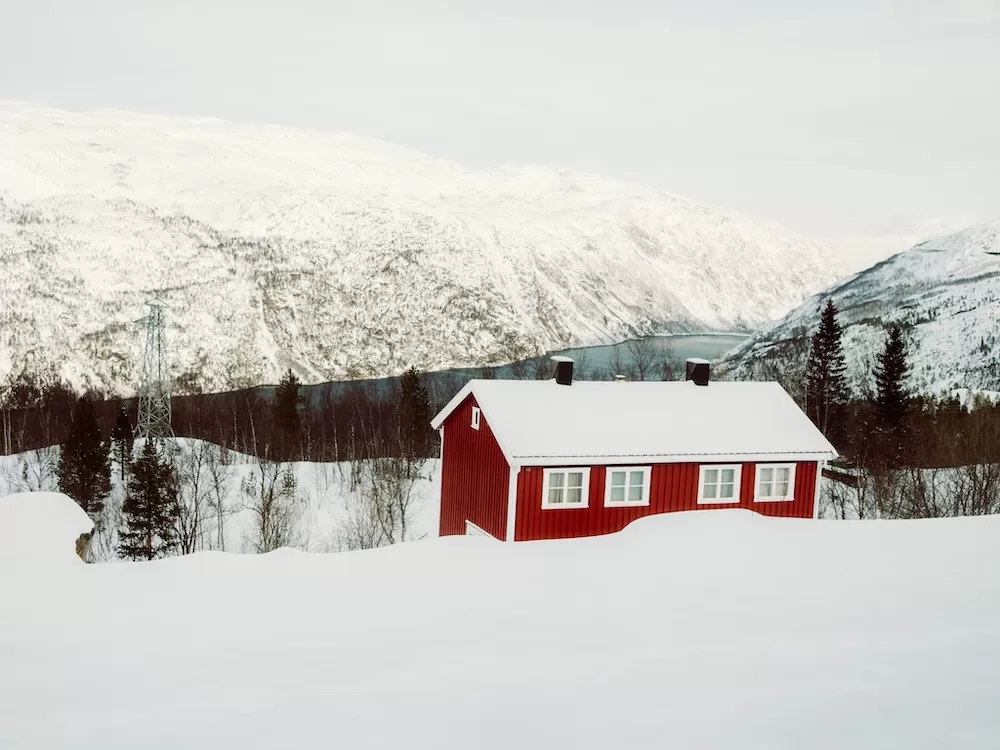
It doesn’t take long until snacks are shared round, bottles of wine cracked open and stories are told from the safety of anonymity. Once, on a night service from Pyongyang to Beijing, a young woman recounted how her ex-boyfriend had thrown her out of their house for having scabies and sent her to prune vineyards on a farm with illegal Chinese migrants, much to the horror of a retiree from Notting Hill.
In turn, he swilled a bottle of merlot and lamented his miserable mother while I began to feel like an unpaid therapist. On the Sunset Limited service from New Orleans to Los Angeles, there was an innate trust from the purple-haired, tattooed runaway who boarded in Houston, carrying a single backpack and bemoaning her “trailer trash” family from whom she’d escaped to find a better life.
Over sour coffee and pancakes, she cried on the shoulder of a single father en route to his estranged daughter’s wedding in California. In him she found a confidant, one who wouldn’t judge, dismiss or ridicule her—at least not to her face.
While the slowness of railway travel lends itself to self-examination, bouts of unexpected therapy and counseling, it’s also a place to nurture existing relationships. I spent eight months traveling the world with my fiancé, observing how he assisted the elderly, played cards with kids and quietly endured delays and cancellations—marrying him at the end.
From Brussels to Berlin, I met a father who took his seven-year-old son on trains so he could practice English and learn to feel at ease with strangers, no matter their age, creed or color.
Between Berlin and Stockholm I befriended a mother returning home from a conference in Prague. She had refused her teenage son’s requests to fly, choosing instead to bring him on the sleeper train to make one last mother-son memory before he left home for good.
Although many are fleeting by nature, certain train encounters leave impressions that last a lifetime—a colorful cast of characters wandering in and out of our lives. There was the Tibetan nun in Xinjiang Province who taught me to scan QR codes on my iPhone, the professor from Manitoba who described where to spot wildlife by the tracks, and the veteran in Phoenix with terminal cancer who compelled me to travel as often and as far as I could.
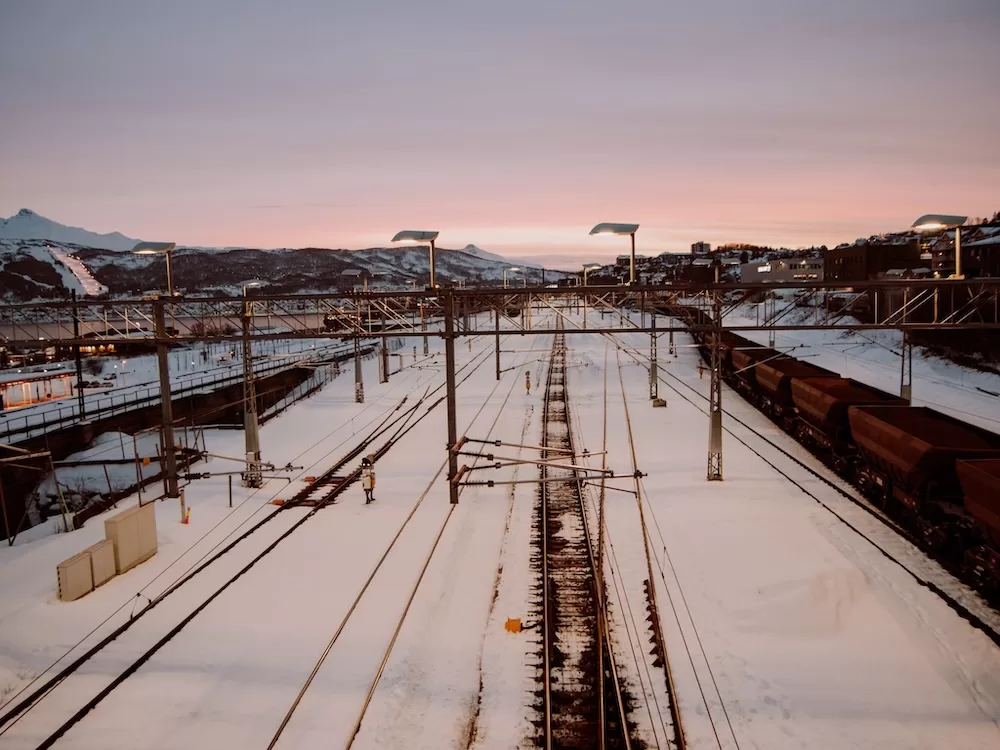
Above all, the slowness of trains enables us to see that we have far more in common with one another than differences, that our lands and seas are connected, our distances closer than we think. From London I rode overland to Beijing, watching for hours as the birch trees flitted by in Siberia, mists swirled in haloes and lakes twinkled at twilight.
The ground galloped alongside for days, and yet we were still in Russia, the flatness terrifying in its endlessness. Then towns scattered into view filled with homes, schools and Orthodox churches. Babushkas came on board, the smell of dried fish steaming out of their baskets.
The land flattened again, the skies cracked open at dawn and the desert reddened through Mongolia, wild horses kicking up dust, round gers funneling smoke from slim chimneys.
Two nights later I woke to grassy steppes and greenness, the gleam of waterlogged paddy and the thin but visible thread of the Great Wall of China.
Wires dangled low, buildings edged towards the tracks and hoardings appeared at our side as we wound into the centre of Beijing, drawing to a standstill, my mind’s eye imprinted with a live map of half the world.
Trains also have the power to bring our lives back on track: allowing us to finish books that have stayed on bedsides for weeks, to catch up on the Oscar contenders that went unwatched, to write the postcards so warmly received by loved ones. Blessed with the gift of time, the passenger is ultimately free to do as they please while the wonders of the world scroll past.
Just before my return ride, while waiting on the platform at Kiruna, I saw the Northern Lights. Like wisps of green steam, they twirled and stretched, fading as the train picked up speed headed south.
——————
British journalist Monisha Rajesh is the author of Around the World in 80 Trains, winner of National Geographic Traveller’s 2019 Reader Award, and other books. Learn more on her website.
Acclaimed photographer Marc Sethi has shot major commercial campaigns around the world and his work has appeared in Vanity Fair, National Geographic, The Guardian, and many more outlets. Learn more at his website.
Contact Author
"*" indicates required fields
Stay Ahead on Every Adventure!
Stay updated with the World News on Escape Artist. Get all the travel news, international destinations, expat living, moving abroad, Lifestyle Tips, and digital nomad opportunities. Your next journey starts here—don’t miss a moment! Subscribe Now!

